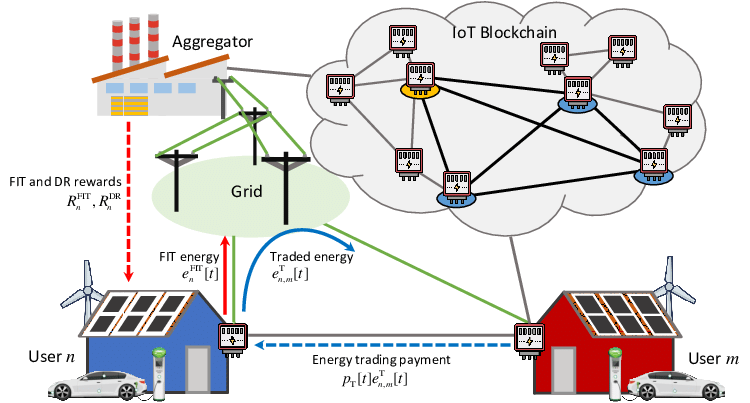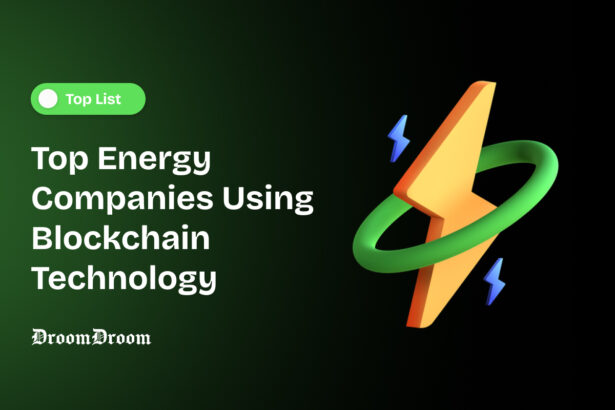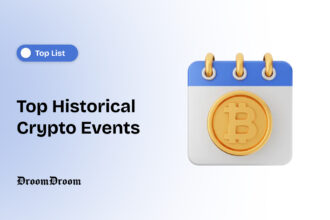Are there top energy companies using blockchain technology?
- Top Energy Companies Using Blockchain Technology
- WePower – Championing Clean Energy Through Blockchain-Enabled Trading in Estonia
- Power Ledger – Enabling Peer-to-Peer Energy Trading in Australia
- Iberdrola and Acciona Energy – Leveraging Blockchain in the Transition from Fossil Fuels in Spain
- Brooklyn Microgrid – A Blockchain-Enabled Community Grid in New York
- The Sun Exchange – Leveraging Cryptocurrency to Fund Solar Projects in South Africa
- The Potential of Blockchain Beyond Energy
- Conclusion – Top Energy Companies Using Blockchain
Yes, Blockchain technology has the potential to revolutionize the renewable energy sector and usher in a new era of decentralized, consumer-driven power generation. At its core, blockchain is a distributed ledger that allows secure recording of transactions and data sharing across a decentralized network of computers without the need for a central authority. When applied to the energy sector, blockchain opens up exciting possibilities to increase efficiency, lower costs, and accelerate the transition to clean energy.
In the current outdated model, energy grids are centralized and consumers have little choice or control. Energy is generated at large fossil fuel plants and transmitted to end users. But this model is proving increasingly inefficient. Renewable sources like solar and wind are now cheap enough to compete with traditional fuels. Innovations like smart meters and battery storage allow households to generate, store, and trade energy. Blockchain allows linking up all these new technologies and users in an intelligent networked grid.
Blockchain’s decentralized nature is key. Rather than a single entity controlling the system, power is distributed across the network. Transactions are trackable and transparent through the blocks of code. And smart contracts can enable automated exchanges and micropayments between energy producers, storage providers, and consumers. This allows households with solar panels to sell excess energy to their neighbors seamlessly. Networks of electric vehicle batteries can store and discharge power when needed. Consumers can easily switch between energy providers or invest in community renewable projects. By leveraging the shared ledger, blockchain has huge potential to deliver an energy system that is clean, resilient, and democratic.
Companies around the world are already showing what is possible. From enabling transparent renewable energy trading in Estonia to funding solar projects through cryptocurrency in South Africa, these diverse case studies demonstrate exciting models for the future.

Top Energy Companies Using Blockchain Technology
WePower – Championing Clean Energy Through Blockchain-Enabled Trading in Estonia
Based in Estonia, WePower uses blockchain to increase renewable energy funding and give consumers more control. Estonia’s electricity system is unique. The small Northern European nation already produces most of its energy needs from renewable sources such as wind and biomass. And it has an advanced nationwide digital infrastructure. This made it an ideal testing ground for WePower to pilot their blockchain-based solution.
The startup partnered with electricity company Elering to develop a transparent platform for trading renewable energy. They created a blockchain-based token, WPR, representing the environmental attributes of newly constructed wind and solar farms. Energy producers can sell these tokens to individual consumers and large corporate buyers who want to improve their sustainability credentials. After purchase, consumers can redeem the tokens to claim renewable energy once the farm is constructed and connected to the grid. By pre-funding projects this way, WePower aims to accelerate the development of new wind and solar capacity.
Consumers also gain more visibility into the energy market. They can track the source of their electricity and see real-time pricing. WePower co-founder Arturas Asakavicius explains how this empowers consumers: “Blockchain technology coupled with energy drives consumer empowerment. Consumers can now choose renewable energy and invest in it. This is done by increasing transparency around energy generation and pricing.” The platform’s success in Estonia has now led WePower to target expansion into Australia and Spain as they scale up their model globally.
Power Ledger – Enabling Peer-to-Peer Energy Trading in Australia
While Estonia already enjoyed a renewable-dominated grid, Australia faces a different challenge. The land Down Under still generates over 80% of its electricity from coal and gas. However, soaring energy costs and increased adoption of rooftop solar created an opportunity for Power Ledger to leverage blockchain to help accelerate the transition.
Based in Perth, Power Ledger developed a decentralized trading platform to enable peer-to-peer transactions between solar households and their neighbors. Utilizing blockchain’s transparent and immutable ledger, the system tracks the generation and exchange of excess renewable electricity between participants. This avoids the need for intermediaries and centralized oversight.
Power Ledger launched several pilot projects demonstrating how its blockchain platform could work with existing infrastructure to increase renewable energy usage. In suburban Perth, the startup partnered with electricity retailer Synergy. Forty households took part in a trial trading solar power with each other using Power Ledger’s platform. The results showed that participants could save money by sharing distributed clean energy within their community.
Another trial in an eco-housing development in Fremantle highlighted Power Ledger’s potential to underpin microgrids. Using blockchain, over 100 properties were enabled to generate, store, and exchange solar energy locally. Excess renewable power was channeled into battery storage instead of being exported back to the main grid. These demonstrations “provide proof-of-concept that peer-to-peer energy trading can be incorporated cost-effectively into existing electricity networks,” says Power Ledger’s co-founder Dave Martin. As the trials were successful, the company is now working to scale up and expand across Australia.
Iberdrola and Acciona Energy – Leveraging Blockchain in the Transition from Fossil Fuels in Spain
Spain’s energy landscape also bears little resemblance to Estonia’s. While the Southern European nation boasts plentiful renewables potential, it still generated over 60% of its power from fossil fuels in 2018. But progressive legislation and corporate interest are now pushing Spain’s energy transition forward – and blockchain is playing a role. Two of the country’s energy giants, Iberdrola and Acciona Energy, have turned to blockchain to track renewable generation and bring more transparency to consumers. As major multinational corporations with over 70,000 employees between them, their adoption of the fledgling technology is significant.
Iberdrola teamed up with technology startup Energy Web to develop a blockchain solution to guarantee the renewable origin of its customers’ electricity. The system acts as a digital certificate, registering each megawatt of wind and solar power on the blockchain when it is generated. This creates an accurate and immutable record, giving consumers confidence in the sustainability of their energy supply.
Meanwhile, Acciona Energy became the first company in the renewable sector to offer blockchain-enabled energy guarantees of origin. The company used the technology to authenticate a batch of wind power produced in the Spanish region of Navarra before selling it to the corporate buyer. This blockchain system ensures full traceability across the renewable energy value chain.
“Using blockchain helps build trust by making the audit process easier and more transparent for our renewable energy,” said Acciona Energy’s Innovation Director. By promoting renewable power through pioneering blockchain systems, these major players are helping shift Spain away from fossil fuel dominance.
Brooklyn Microgrid – A Blockchain-Enabled Community Grid in New York
While the previous examples focus on nationwide change, blockchain can also empower transformation at the community level. The Brooklyn Microgrid project in New York demonstrates this potential.
In Brooklyn, many households have adopted solar panels on their rooftops. This distributed clean energy often goes unused locally, as excess power is exported back to the central grid. The Brooklyn Microgrid aims to change this using blockchain software to power a community energy network. Participants can generate and store power locally, then buy and sell it to each other securely on the blockchain platform.
The idea turns traditional power structures upside down. Instead of relying on big centralized plants, the community produces renewable electricity. And by enabling distributed peer-to-peer transactions, the blockchain system keeps value within the local neighborhood. Any revenue from power sales stays within the community instead of going to a far-off utility company.
One major benefit of localized generation is resilience. In the aftermath of storms like Superstorm Sandy, residents with solar and batteries could stay operational even if the main grid fails. The decentralized nature also promotes self-reliance and sustainability. The Brooklyn Microgrid aims to inspire replication in many other communities worldwide by demonstrating the blockchain concept at a small scale.
As founder Lawrence Orsini explains, “We are moving towards the internet of energy, where energy infrastructure allows residents to generate, store, buy, and sell renewable energy to each other on a shared platform.” The future is local.
The Sun Exchange – Leveraging Cryptocurrency to Fund Solar Projects in South Africa
While Brooklyn provides a community model within a developed country, The Sun Exchange offers an innovative financing structure to accelerate solar power across the developing world. This startup taps into cryptocurrencies and blockchain to crowd-fund small-scale solar projects.
Based in South Africa, The Sun Exchange enables anyone worldwide to invest in solar panels leased to schools, businesses, and communities in sun-drenched locations nationwide. People purchase individual cells that makeup part of a larger installation and then earn rental income from that solar power sold over a 20-year lease period.
The transparent blockchain platform verifies ownership and tracks lease payments, enabling crowd-funding without intermediaries. And rentals are collected in bitcoin or ether, making investment accessible to a global audience. These cryptocurrencies also help avoid the currency volatility and money transfer issues common across emerging markets.
Since launching in 2015, The Sun Exchange has already funded over a dozen solar projects through thousands of investors. One campaign financed an 18kW rooftop array on a Cape Town warehouse that supplies a nearby orphanage. Another crowdfunded a 60kW system that powers an elephant sanctuary in Knysna. Looking ahead, the startup aims to continue driving off-grid solar advancement across the developing world by leveraging blockchain finance.
As The Sun Exchange’s founder Abraham Cambridge says, “Anyone can invest in affordable solar energy and earn rental income from it. This is possible by combining solar energy with bitcoin and blockchain financial innovation.”
The Potential of Blockchain Beyond Energy
One common thread runs through these varied case studies and pilots: transparency. Blockchain offers a clear view into how energy is generated, stored, and traded. For consumers, this visibility provides confidence in the renewability and sustainability of their power supply. For producers and prosumers, it provides a trusted method to showcase the green credentials of their energy output. And for grids and utilities, it delivers an oversight tool to balance variable renewable sources better.
This represents just a fraction of the transformations blockchain could enable. The technology promises truly intelligent energy grids when combined with artificial intelligence, Internet of Things sensors, and big data analytics. Autonomous systems could instantaneously distribute power from wherever it is abundant to wherever it is needed. Machine learning algorithms and predictive data modeling could continually optimize the grid for efficiency. Smart appliances leveraging the blockchain could seamlessly switch usage to cheap and abundant renewable supplies.
Proponents argue that blockchain’s potential extends far beyond the energy sector. By bringing greater transparency and disintermediation, blockchain has relevance for supply chain tracking, voting, banking, insurance, and healthcare. In these fields, too, the technology offers the possibility to decentralize control, reduce costs, and empower users. There are challenges around scalability, speed, regulation, and privacy. However, blockchain may transform industries in the coming decade by enabling distributed trust instead of centralized intermediaries.
The technology is still in its infancy and most top energy companies applications remain in pilot stages or small-scale demos. But the examples profiled above show how blockchain can shift power generation, distribution, and ownership closer to a clean, decentralized grid of the future. From startups leveraging blockchain to enable transparent renewable energy trading and peer-to-peer sales to major multinationals using it to certify their expanding renewable portfolios to community groups banding together to self-organize local energy production, blockchain is already opening up exciting possibilities.
Further technological refinement, supportive policies, and lessons on effective implementation are needed. However, blockchain seems poised to accelerate the renewable energy transition across developed and emerging economies by empowering users and increasing visibility. The technology promises to redefine how we generate, distribute, and consume electricity within the next decade across grids and communities. Just as the internet transformed how we network and exchange information, blockchain may do the same for clean, distributed energy. The only limit is our imagination.
Conclusion – Top Energy Companies Using Blockchain
Blockchain is still an emerging technology, but it already demonstrates immense potential to accelerate the transition to renewable energy worldwide. From startups to multinational corporations, companies leverage blockchain’s decentralized nature and transparency to increase clean energy trading, give consumers more choices, and provide visibility into sustainability claims.
By enabling decentralized markets and peer-to-peer energy transactions, blockchain promises to shift power away from centralized utilities and back into the hands of consumers and communities. Projects like the Brooklyn Microgrid prove that localized energy grids are possible and even more resilient. Cryptocurrency-powered platforms such as The Sun Exchange are making it easier for citizens worldwide to fund renewable energy projects where finance is needed most directly. Blockchain makes it possible here and now.



















